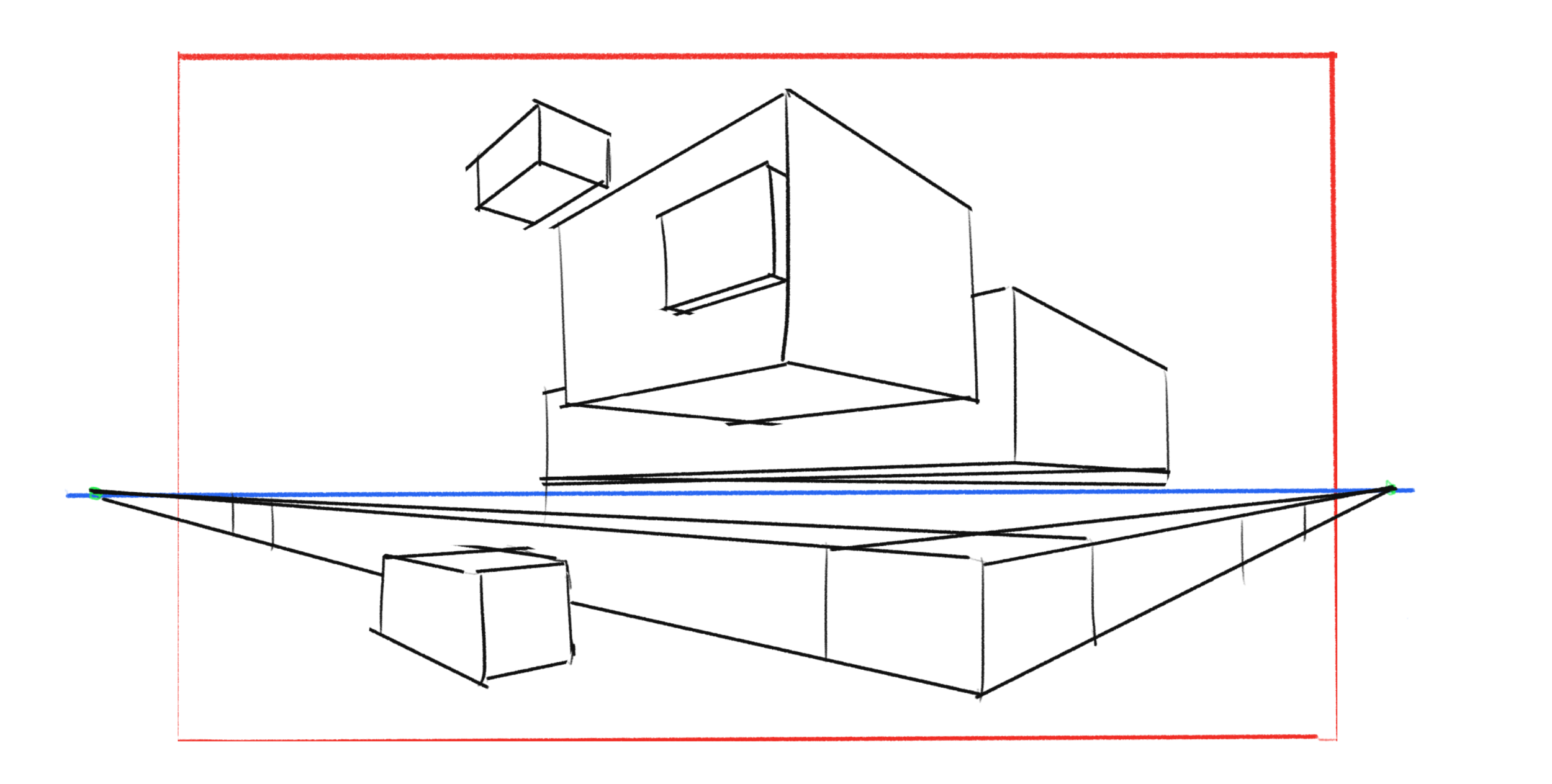Drawing Fundamentals - 10 CRUCIAL THINGS to learn for drawing
Drawing Fundamentals - What are they?
Seriously, how do you know what to practice or learn? What will give you the most amount of skill-gain for the least amount of time lost?
The name of the game is to focus on the principles. The basics, the fundamentals.
These include:
- line types and usage
- perspective
- values & light
- edges
- proportion
- composition
- construction
- process
- form
- anatomy
I cover them in brief in this video:
Why do these fundamentals matter?
When you start to learn terms, ideas, and concepts in each of these domains, and get into practicing them and playing with them, you’ll start to see skill gain pretty quickly.
The reason is because you start developing a toolkit that can solve many of the issues you’ll face in terms of the technical on the picture plane.
Yes, there are creative issues, emotional and psychic issues related to art, but those aren’t covered in this particular post.
Instead, let’s focus on the technique-developing ideas for now, because they’re a prerequisite to expounding upon your expression.
- Line types and Usage
The varieties of lines that exist are numerous. Each type tends to work well in certain circumstances, and less well in others. There aren’t really any rules when it comes to line, save for the fact that you should get a sense of how to wield them.
I talk a lot more about line in this post.
- Perspective
Perspective is the use of lines and points to ensure your shapes align with a particular angle. It can be one of the most daunting fundamentals of drawing to the beginner, but I urge you to set emotions aside and do some simple perspective exercises. Most often, perspective comes in one, two, or three vanishing points, and we use these to get interesting and accurate results in our drawings. With it you can create a great deal of pictorial depth.
To get an overview of perspective, watch this video.
- Values & light
Values and light are integral to generating appealing and readable pictures, as well as defining volume and form.
Values range from pure black to pure white, with every imaginable gradient of gray in between.
Light is how we attempt to replicate the effect that the visible ultraviolet spectrum has upon our ability to see. In other words, we’re taking photons (particles of light) and bouncing them around the objects in our scene to present them in the best way possible. We can consider various types of daylight and artificial light, or the lack thereof, which is shadow.
- Edges
Edges are what we use to define our mark-making. They range from completely imperceptible (like atmosphere) to soft (think clouds or folds in fine fabric) and finally all the way to sharp and pronounced, like the edge of a knife. Edges are often the least-considered element by beginners, because there’s much more to worry about than how things are flowing into one another in terms of our rendering and mark-making.
Learning to wield effective edges permits us to create the greatest amount of believability. When form is transitioning sharply or softly, we visually “buy” the way things are looking. Next time you have the inkling, look at the edge of a shadow and see if it’s sharp, soft, or where it gets lost entirely. Shadows, Light, clouds, and clothing are some of the best places to start to notice and categorize edges.
- Proportion
Measuring elements of the picture plane next to one another. Proportions are how we achieve scale and foreshortening. Most humans are approximately 7.5 heads tall, for example. We can break down the proportions of the human figure further, or we can transpose the idea of proportion to machinery, buildings, or virtually anything else we’d like to draw. presenting proportions properly or playing with them imaginatively is a potent way to amplify your drawing prowess.
- Composition
Composition is the flow and arrangement of elements on the picture plane. A musician must compose the notes in their song, they must arrange the various instruments and sounds in a certain way to convey the concept of their tune. Layering things like drums, grooves, melody, and chord structures.
When it comes to creating art, we’re composing the fundamentals we’re discussing in this post, as well as the actual factors that we’re choosing to place on the picture plane. For now, all you should keep in mind is that there should be a focal point (the area with the most contrast and interest) as well as elements that subtly or not-so-subtly point to it. When we stack elements within the confines of the picture plane, we create motion, frames, and inferred lines - and once you learn to read how these visually “vibrate” you’ll start to develop an intuitive understanding of composition along with your theoretical one.
- Construction
Construction is how we build and interlock shapes and forms on the picture plane. It’s the A-to-Z process of generating the drawing we’re after. We will usually use some form of light guidelines sketched in, some degree of perspective, and a fair amount of simplification. These order themselves aright in order to carry our drawing to a more finished state. Imagine trying to build a large building without scaffolding to allow the workers to walk along elevated planes and do their work. The invention of scaffolding, cranes, and other means of constructive potency help to take something from concept to completion.
There are thousands of ways to build various items from start to finish, but when it comes to drawing, we’re concerning ourselves with the types of guides and marks we make in order to align things proportionately, and construct them with relative efficiency.
- Process
Construction harkens back to process. Process is the mother of construction. When you know your process, or at least have a rough outline of it, you’re in much better shape to succeed. Of course, I believe that practice is the goal, but the process is to be respected.
Knowing how to start strong, carry yourself through the tough mid-points, and fill in the gaps as your finish as best you can will go a long way. A common process is to generate many rough ideas (thumbnails) that are small and easy to execute, then taking those rough ideas and scaling them up with more care and finesse.
Finally, we start to lay in realized and rendered lines, values, shapes, and lighting. Starting with a vague and quick concept may only take 5 minutes, but winding through the process to the end result may take many pieces of paper, much reference, stopping to study elements that aren’t coalescing, and rendering for hours upon hours.
What started as a 5-minute sketch could end up as a gorgeous 100-hour illustration— and the process is how we tackle that transition.
- Form
Form is something we touched upon in the earlier brackets of this list. It most often comes about when light and shadow intermix into a potent dimensionality. The way that form allows us to perceive volume and depth is wondrous, and when we learn to squint at objects and separate their various surface planes, form starts to make much more sense. Whether the object is simple and geometric, or complex and detailed, light will cast itself upon the object, which will always result in shadow as well. Once you understand how those two elements create either a flattening effect or a great visual “pop!” you’ll find that rendering any part of your drawing will start to get a little less intimidating. Start off shading spheres and cones, cubes as well. This will serve to broaden your horizons into more advanced forms like buildings, machines, people, and things found in nature.
- Anatomy
Anatomy is the subject of much frustration, but much fascination of most artists. There’s an anatomy to creatures, to people, to robots, to products, and to buildings. It’s about abstracting the various elements that make up any given thing, and using your knowledge of the way those elements “stack” to draw it. All of its proportions, placements, and perspectives (thanks, Andrew Loomis!) Anatomy is a vast rabbit hole unto itself (like all of these fundamentals) but you only need a certain degree of knowledge to execute with great verisimilitude the things you’re aiming to sketch. You won’t need to draw the organs of the body in order to draw it, but the skeletal system, muscular system, and the visible organs will certainly come into play.
If you’re interested, there is a Simple Anatomy for Artists course. It will help to break down the perceived complexity of the human body and allow you to tackle the task of drawing it more readily.
Conclusion
You may be wondering things like “what about color?” The simple fact is that many appealing images are created every day using very simple color, or purely in grayscale. Color is a wondrous tool, but outside of the scope of this particular drawing-focused piece. Before we tackle too much regarding color, we should be able to give the rest of these fundamentals their apt due.
All in all, this list isn’t completely comprehensive, but it is one humble artist’s stab at giving you a cohesive set of items to focus your studies into. These are the things that I have placed my time and attention upon, and they have paid dividends for me in terms of skill and improvement each and every time. That’s why they’re fundamental, because when you have these down as a basis, the level of your art is elevated by proxy.
Don’t dismay if this list took you a while to get through, or if it seems like learning to draw is just “too much work.” You can spend 15 minutes per day playing with these basic ideas and still see skill gain, if you know how to practice deliberately.
It is my unyielding faith that these principles, if studied and applied in earnest, will serve you to such a degree that you will be amazed. The discoveries you make along with way are rewards comparable to gold for the heart, and all it takes is a little consistent effort.
Happy drawing.
P.S.
Whenever you're ready, there are 2 ways I can help you:
1. Grow & Sharpen Your Drawing Skills here. (1,800+ students)
2. Build better Paintings and get Commissions here. (500+ students)








